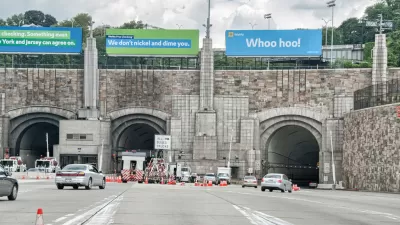New in flaneur-enabling technology: a team of intrepid aesthetes in Barcelona is working on a new app that would advance GPS mapping tools by providing the most beautiful route to a destination, rather than the shortest or least congested route.
Those of us obsessed with the navigation and mapping powers of route-calculating apps will soon have more aesthetically-minded options for finding a route across town, thanks to the work of Daniele Quercia and friends at Yahoo Labs in Barcelona, Spain. An article in the MIT Technology Review explains that Quercia and team "have worked out how to measure the 'beauty' of specific locations within cities and then designed an algorithm that automatically chooses a route between two locations in a way that maximizes the beauty along it. 'The goal of this work is to automatically suggest routes that are not only short but also emotionally pleasant,' they say."
The team used a number of methods to collect data on which places in London are more, shall we say, fetching. First there was crowdsourcing via public opinion: "Quercia and co begin by creating a database of images of various parts of the center of London taken from Google Street View and Geograph, both of which have reasonably consistent standards of images. They then crowdsourced opinions about the beauty of each location using a website called UrbanGems.org." (StreetSeen is a similar system for crowd sourcing public reaction to cityscapes.)
The second involved scraping data from photo sharing sites like Flickr: "Crowdsourcing opinion for every possible location in a city is clearly a time-consuming and potentially expensive business. So Quercia and co have automated this process using photos from Flickr and the data and tags attached to them," and, "[factors] that turn out to be a good indicator of beauty are things like the number of pictures taken of a particular scene and comments associated with positive emotions."
As for choosing the more beautiful route, it might just take a little longer: "Quercia and co say that on average these routes turn out to be just 12 percent longer than the shortest routes, which makes them reasonable alternatives for a pedestrian."
FULL STORY: Forget the Shortest Route Across a City; New Algorithm Finds the Most Beautiful

Alabama: Trump Terminates Settlements for Black Communities Harmed By Raw Sewage
Trump deemed the landmark civil rights agreement “illegal DEI and environmental justice policy.”

Study: Maui’s Plan to Convert Vacation Rentals to Long-Term Housing Could Cause Nearly $1 Billion Economic Loss
The plan would reduce visitor accommodation by 25% resulting in 1,900 jobs lost.

Why Should We Subsidize Public Transportation?
Many public transit agencies face financial stress due to rising costs, declining fare revenue, and declining subsidies. Transit advocates must provide a strong business case for increasing public transit funding.

Wind Energy on the Rise Despite Federal Policy Reversal
The Trump administration is revoking federal support for renewable energy, but demand for new projects continues unabated.

Passengers Flock to Caltrain After Electrification
The new electric trains are running faster and more reliably, leading to strong ridership growth on the Bay Area rail system.

Texas Churches Rally Behind ‘Yes in God’s Back Yard’ Legislation
Religious leaders want the state to reduce zoning regulations to streamline leasing church-owned land to housing developers.
Urban Design for Planners 1: Software Tools
This six-course series explores essential urban design concepts using open source software and equips planners with the tools they need to participate fully in the urban design process.
Planning for Universal Design
Learn the tools for implementing Universal Design in planning regulations.
Caltrans
Smith Gee Studio
Institute for Housing and Urban Development Studies (IHS)
City of Grandview
Harvard GSD Executive Education
Toledo-Lucas County Plan Commissions
Salt Lake City
NYU Wagner Graduate School of Public Service



























